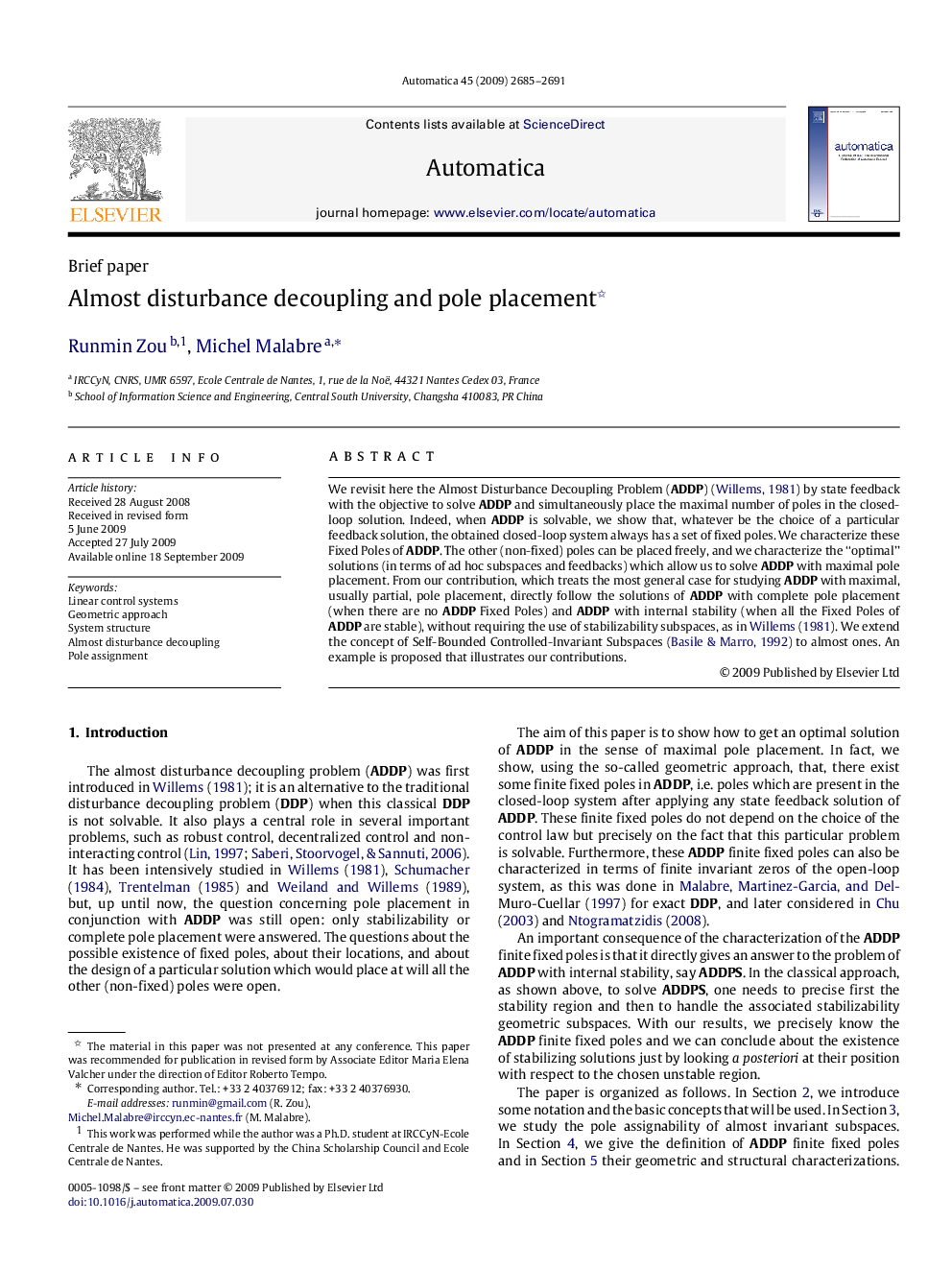| Article ID | Journal | Published Year | Pages | File Type |
|---|---|---|---|---|
| 697796 | Automatica | 2009 | 7 Pages |
We revisit here the Almost Disturbance Decoupling Problem (ADDP) (Willems, 1981) by state feedback with the objective to solve ADDP and simultaneously place the maximal number of poles in the closed-loop solution. Indeed, when ADDP is solvable, we show that, whatever be the choice of a particular feedback solution, the obtained closed-loop system always has a set of fixed poles. We characterize these Fixed Poles of ADDP. The other (non-fixed) poles can be placed freely, and we characterize the “optimal” solutions (in terms of ad hoc subspaces and feedbacks) which allow us to solve ADDP with maximal pole placement. From our contribution, which treats the most general case for studying ADDP with maximal, usually partial, pole placement, directly follow the solutions of ADDP with complete pole placement (when there are no ADDP Fixed Poles) and ADDP with internal stability (when all the Fixed Poles of ADDP are stable), without requiring the use of stabilizability subspaces, as in Willems (1981). We extend the concept of Self-Bounded Controlled-Invariant Subspaces (Basile & Marro, 1992) to almost ones. An example is proposed that illustrates our contributions.
